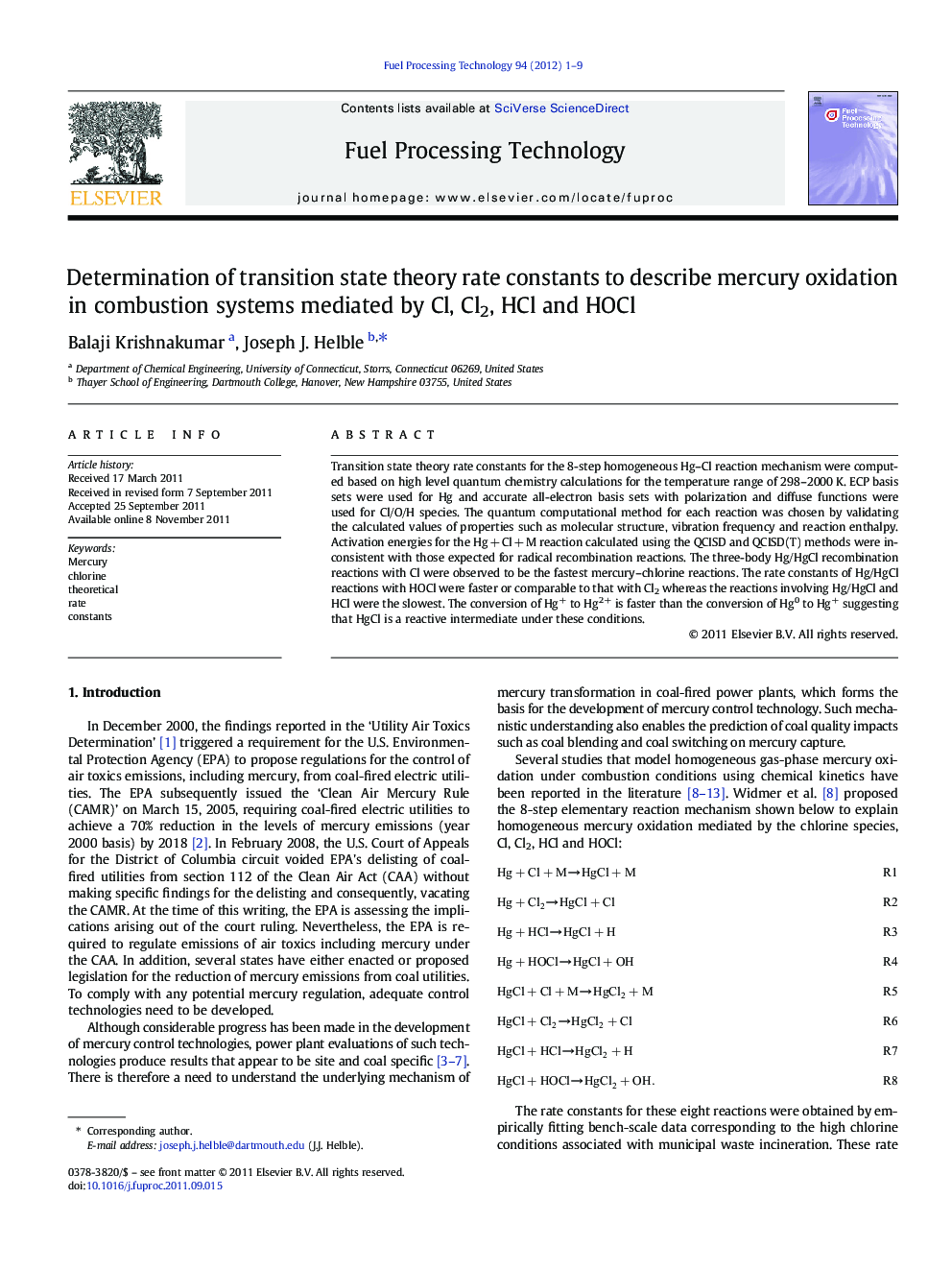| Article ID | Journal | Published Year | Pages | File Type |
|---|---|---|---|---|
| 210486 | Fuel Processing Technology | 2012 | 9 Pages |
Transition state theory rate constants for the 8-step homogeneous Hg–Cl reaction mechanism were computed based on high level quantum chemistry calculations for the temperature range of 298–2000 K. ECP basis sets were used for Hg and accurate all-electron basis sets with polarization and diffuse functions were used for Cl/O/H species. The quantum computational method for each reaction was chosen by validating the calculated values of properties such as molecular structure, vibration frequency and reaction enthalpy. Activation energies for the Hg + Cl + M reaction calculated using the QCISD and QCISD(T) methods were inconsistent with those expected for radical recombination reactions. The three-body Hg/HgCl recombination reactions with Cl were observed to be the fastest mercury–chlorine reactions. The rate constants of Hg/HgCl reactions with HOCl were faster or comparable to that with Cl2 whereas the reactions involving Hg/HgCl and HCl were the slowest. The conversion of Hg+ to Hg2+ is faster than the conversion of Hg0 to Hg+ suggesting that HgCl is a reactive intermediate under these conditions.
► Eight Hg–Cl reaction rate constants were determined using quantum chemistry and transition state theory. ► High level quantum chemistry calculation results were compared with geometry, frequency and reaction enthalpy to get most accurate transition state. ► The Hg/HgCl recombination reactions with Cl were the fastest mercury–chlorine reactions whereas Hg/HgCl with HCl were the slowest. ► The Hg/HCl interactions are unlikely to contribute significantly to Hg oxidation and HgCl is an unstable intermediate.
